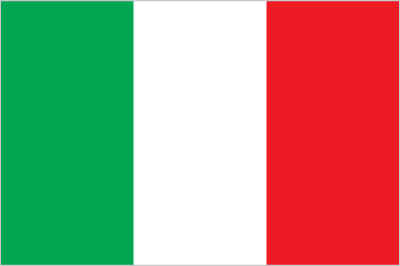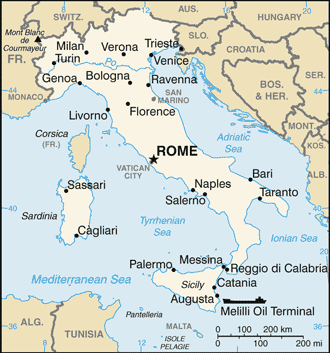Importing from Italy


Italy Country Profile
Official Name (Local Language) Repubblica Italiana
Capital Rome
Population 62,007,540
Currency Euro
GDP $1,852 billion
Languages Italian
Phone Dial In 39
Italy Exports Profile
Exports ($m USD) 503,054
Number of Export Products 4,443
Number of Export Partners 228

Italy Economic Statistics
Government Website | https://www.governo.it/ |
| Sovereign Ratings | https://countryeconomy.com/ratings/italy |
| Central Bank | Banca d’Italia |
| Currency USD Exchange Rate | 0.9214 |
| Unemployment Rate | 11.4% |
| Population below poverty line | 29.9% |
| Inflation Rate | -0.2% |
| Prime Lending Rate | 0.25% |
| GDP | $1,852 billion |
| GDP Pro Capita (PPP) | $36,300 |
| Currency Name | Euro |
| Currency Code | EUR |
| World Bank Classification | High Income |
| Competitive Industrial Performance | 44/138 |
| Corruption Perceptions Index | 54/180 |
| Ease of Doing Business | 51/190 |
| Enabling Trade Index | 36/136 |
Access trade, receivables and supply chain finance
We assist companies to access trade and receivables finance through our relationships with 270+ banks, funds and alternative finance houses.
Get StartedImporting from Italy
Italy has a highly skilled, highly educated workforce which has propelled the country’s reputation for producing high quality, superior brands in a variety of manufactured products. Engineering products, clothing and textiles, motor vehicles and production machinery all contribute to about $500 billion in annual exports.
Packaged medicines are the country’s top export, estimated at $22 billion followed by refined petroleum ($19 billion), vehicle parts ($14 billion) and cars ($10 billion). Top export destinations are Germany, France, the United States, the United Kingdom and Switzerland.
Importing from Italy: What is trade finance?
Stock finance is a revolving facility which alternative financiers offer – it enables organizations to buy stock supplies and can help reduce the pressure from cash management.
Generally, an alternative financier will fund all of the cost of the goods, including charges (e.g. bank charges).
Trade finance offers upsides over more traditional bank finance such as asset finance or loans. Trade finance provides quick funding without affecting existing bank relationships.
How does it work?
If you’re an SME importing or exporting goods internationally, then a trade finance facility would allow you to fund this through offering a letter of credit or some form of cash advance.
I’m looking to import from Italy, how can Trade Finance Global help, and how does it work?
If you’re looking to import products from other international markets, you may need import finance, which is an agreement between yourself (the importer) and the foreign exporter. An alternative finance bank would act as the intermediary, paying the foreign exporter on your behalf until you get the products and have then sold them to your end debtor. Repaying the lender then occurs over an agreed period.
Chart Showing GDP Growth Compared to rest of world
GDP Composition for Italy
Agriculture
2.2%
Fruits, vegetables, grapes, potatoes, sugar beets, soybeans, grain, olives; beef, dairy products; fish
Industry
23.9%
Tourism, machinery, iron and steel, chemicals, food processing, textiles, motor vehicles, clothing, footwear, ceramics
Services
73.8%
Map
Top 5 Exports Partners
| Country | Trade | % Partner Share |
| Germany | 62,814 | 12.49 |
| France | 51,815 | 10.30 |
| United States | 45,608 | 9.07 |
| Spain | 26,094 | 5.19 |
| United Kingdom | 25,870 | 5.14 |
Top 5 Exports Products
| Export Product | Number |
| Petroleum oils, etc, (excl. crude); preparation | 3.6% |
| Other medicaments of mixed or unmixed products, | 3.6% |
| Automobiles with reciprocating piston engine di | 2.9% |
| Art. of jewellery and pts thereof of/o prec mtl | 2.7% |
| Motor vehicle parts nes | 1.5% |
Speak to our trade finance team
Local Partners
- All Topics
- Italy Trade Resources
- Export Finance & ECA Topics
- Local Conferences



















